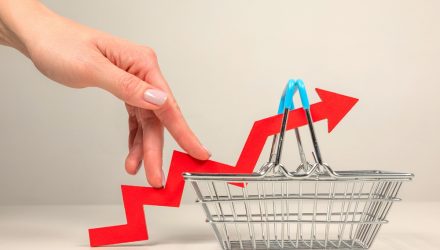With the first quarter of 2022 in the history books, commodities investors will look back upon it with fondness. Rampant inflation has been pushing commodity prices higher, opening up opportunities for commodities exchange traded funds (ETFs).
That only accelerated when Russia invaded Ukraine. Supply disruptions created a perfect storm that’s hurting consumers, but rewarding commodity investors.
“The prospect of continued supply disruptions from Ukraine this year together with US and South American weather concerns as well as the mentioned rise in the cost of fuel and fertilizers will likely lead to another year of tightening supply,” Ole Hansen, head of commodity strategy at Saxo Bank, said in a weekly commodity market update, according to OilPrice.com.
“During the first quarter, war and sanctions turbocharged an already strong performing sector, resulting in the Bloomberg Commodity Spot Index registering a 24% gain, its best quarter in living memory, thereby almost eclipsing the 2021 gain of 26.5%, the best annual performance since 2000,” Hansen added further.
A Passive and Active Strategy
Commodities investing offers a way to hedge against inflation. Commodities are assets that have tangible properties, such as oil, agricultural produce, precious metals, or raw metals.
Furthermore, commodities give investors alternative assets that are relatively uncorrelated to broad stock market indexes. ETF provider Invesco has a pair of options that investors may want to consider — one using a passive strategy and the other using an active.
For passive exposure, there’s the Invesco DB Commodity Index Tracking Fund (DBC). Per the fund’s description, DBC seeks to track changes, whether positive or negative, in the level of the DBIQ Diversified Agriculture Index Excess Return™, plus the interest income from the fund’s holdings of primarily U.S. Treasury securities and money market income less the fund’s expenses.
Then there’s the Invesco Optimum Yield Diversified Commodity Strategy No K-1 ETF (PDBC). By using an active management strategy, PDBC seeks long-term capital appreciation, and seeks to achieve its investment objective by investing in a combination of financial instruments that are economically linked to the world’s most heavily traded commodities.
Furthermore, PDBC offers exposure to commodity futures without the tax hassle of a K-1. The fund also attempts to avoid “negative roll yield,” which could erode returns over time.
For more news, information, and strategy, visit the Innovative ETFs Channel.








